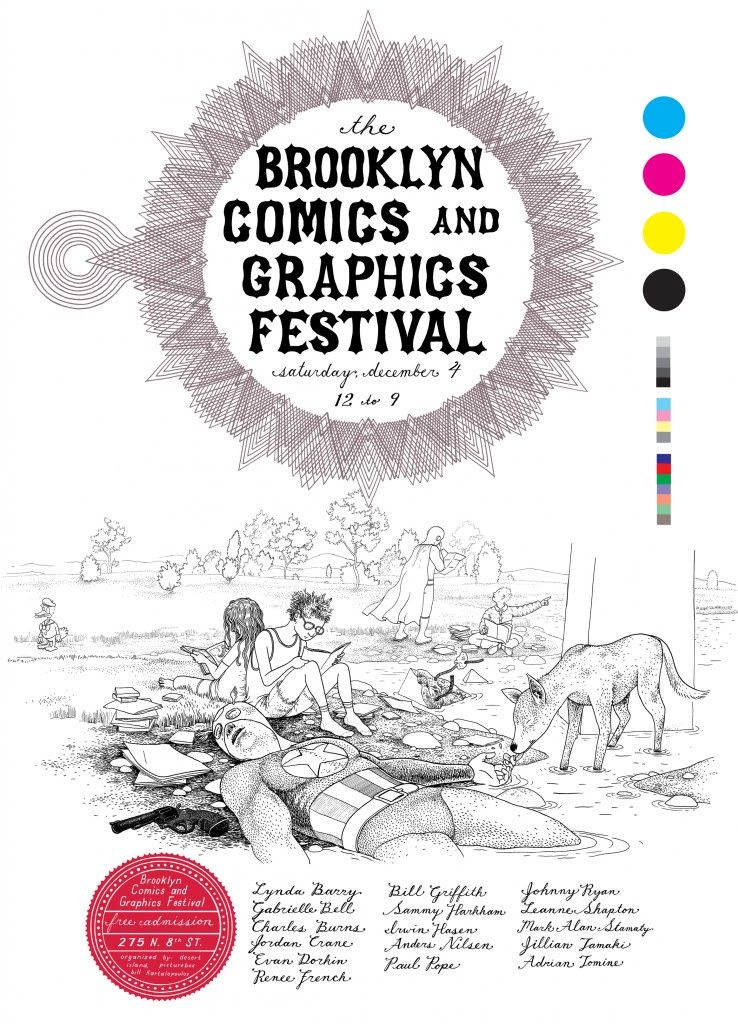
This December, I will be attending The Brooklyn Comics and Graphics Festival, which is kind of a big deal for me because I haven't been to a comics convention outside of Houston for many years. This has partly been a result of no professional need to go (I no longer work in the comics business), no particular desire to go, and not enough money. But lately I've been getting the ache to check one out. I almost went to TCAF and SPX, but in both cases, they both conflicted with things I wanted to do here (the Art Car Parade and the Fringe Festival). But this time I bit the bullet and bought a plane ticket for a long weekend in NYC. I'll spend one day hitting galleries and museums, and the next day at the festival.
I don't know much about the festival, except that this is its second year and that it got a very good reaction after the first year. But its biggest distinguishing feature is that it is a "curated" show. I'm not sure exactly what this means--I've been told details will be published on their site. But if I am correctly inferring the situation from the comments in this article, it sounds as if the organizers decided who they wanted to have exhibit and invited only those people. This is exactly how a curator might curate a group exhibit in an art museum. But here, we are not talking about exhibiting art (although I believe that will be part of the festival), but setting up tables to sell stuff--comics, original art, etc. In short, this is a dealers room-style show where the dealers have been selected by the organizers. (The "dealers" in this case will be artists and alternative comics publishers.)
A curated festival is highly unusual in the world of comics. It caused a degree of argument and upset among the commenters in the article by the Beat. But I think this was mainly because folks aren't used to this approach in the realm of comics festivals. In other kinds of art festivals (and in pretty much all group art exhibits), this is a common practice. For example, the Bayou City Art Festival is juried, even though it is a completely commercial event. Exhibitors are judged on the quality of the work they have for sale and on the quality of their booth design. But comics festivals--even ones that are deliberately alternative--are governed by a powerful sense of tradition and inertia.
The difference between the Brooklyn Comics and Graphics Festival and the Bayou City Art Festival is that in the latter festival, potential exhibitors submitted a proposal, and the final selection was chosen from among the proposals. The BCGF apparently dispensed with the first step and solicited exhibitors they wanted. The upside to doing it this way is that you remove one difficult, time-consuming step from the process. The downside, however, is that you may miss out on a great new talent whose work you were hitherto unaware of.
But that is not a fatal flaw. In fact, I would say that every possible selection criterion for a festival of this sort is inherently flawed in some way. The traditional "first come first served" approach for comics conventions favors people who are already familiar with the comics world, who are, in a sense, insiders. It also doesn't guarantee the highest quality exhibitors, nor exhibitors who will be just right for the market the organizers are trying to reach. The BCGF curated show method also allows the organizers to reach out to potential exhibitors who might not ordinarily consider exhibiting at a show like this. It allows them to narrowly focus the festival for a specific kind of comics fan. I think this a completely reasonable, grown-up way to go.
As I find out more about the show, I will report it. And, of course, I will blog about the show itself when I go. In any case, it looks like it will be lovely. The guests include artists like Lynda Barry, Gabrielle Bell, Charles Burns, Jordan Crane, Renee French, Mark Alan Stamaty and Adrian Tomine and many more.




No comments:
Post a Comment